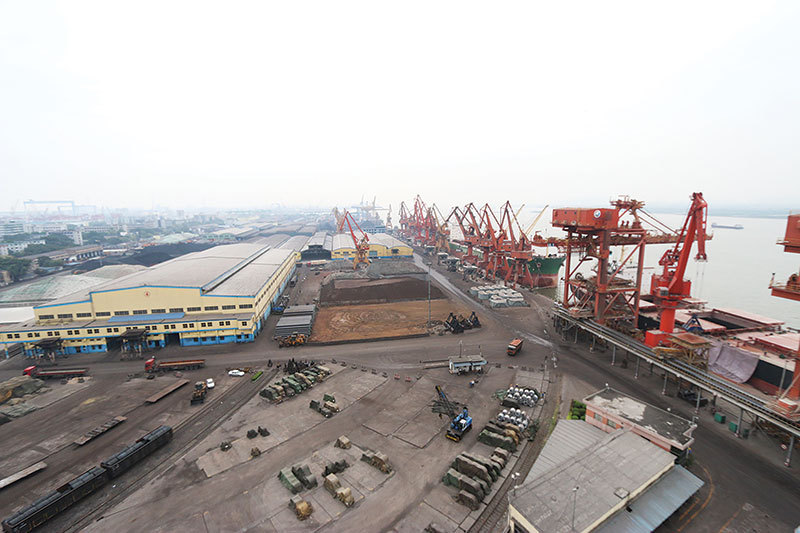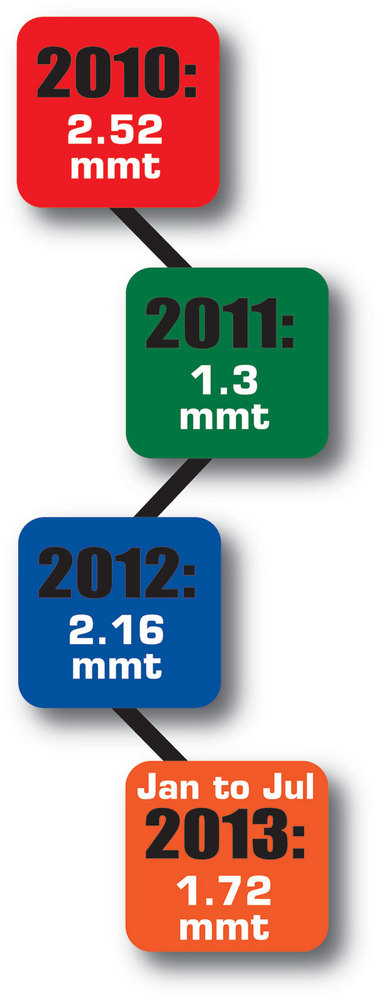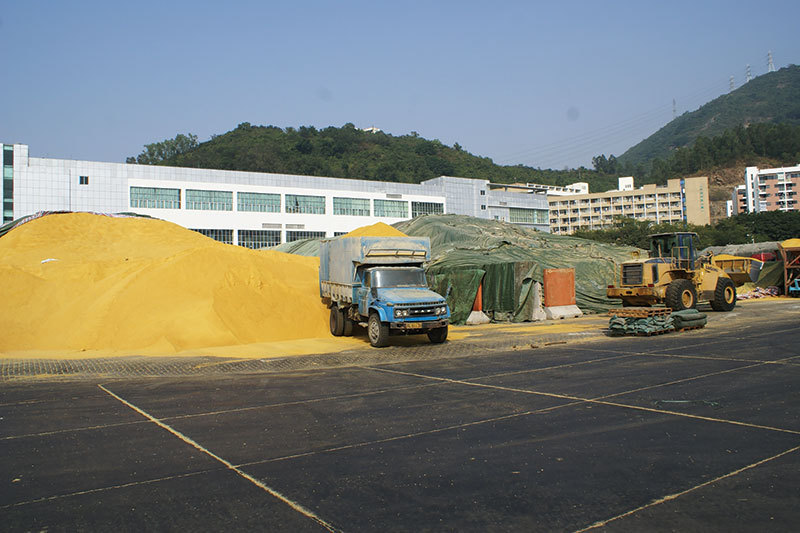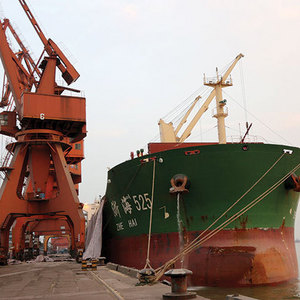Destination China






PHOTO: USGC
November 20, 2013
BY Chris Hanson
Against the backdrop of the South China Sea, another yellow-dusted truck rumbles underneath the loader to be filled with U.S.-produced distillers grains. Machines and cranes whir to life as men in white masks bark orders over walkie-talkies. One of the giant cranes, with its arms webbed in ladders and cables, swings back from the adjacent ship, spilling its contents inside a blue bin. The truck is quickly filled and, after giving a brief belch of exhaust, rumbles away before another one takes its place.
Prior to 2009, there was relatively low distillers grains activity in China. During the first six months of 2008, the U.S. only exported 261 metric tons of the feed to the country. Although the imports were relatively unremarkable, the following year marked the beginning of the country’s leading role in distillers grains imports. “It hasn’t been until recent years that China has really started to buy DDGs (dried distillers grains),” explains Alvaro Cordero, manager of global trade at U.S. Grains Council.
During April 2009, China’s imports broke the 3,000 metric ton barrier and never looked back. What followed was month after month of growth, which peaked in October at 144,982 metric tons purchased from the U.S. at a price tag of $25.5 million. The following months saw a slight decrease in exports, followed by yet another surge, beginning in February 2010, of U.S. imports topping to a then all-time high of 346,612 metric tons in July 2010. When the year concluded, Chinese buyers had spent $500 million on 2.52 million metric tons (mmt) of distillers grains. Although it was a record year for distillers grains imports, December also marked the beginning of the antidumping investigation by China’s Ministry of Commerce, which was spurred by three Chinese companies.
During the 18 months of investigation, the ministry investigated whether imports of distillers grains were hurting Chinese production of the product. What followed was a decline in distillers grains imports in 2011, falling to as low as 63,767 metric tons in April.
After the decline, distillers grains imports did not break the 200,000 mark until spring 2012. By that March, China imported more than 189,000 metric tons and reached its annual peak in April 2012 with 267,473 metric tons of distillers grains imports with three succeeding months of 200,000 plus figures after the antidumping case was dropped when the Chinese plants withdrew their petition in May 2012.
Fast forward to 2013, China is now the top importer once again. At press time in late October, with only the data through July available, China had imported 1.72 mmt of distillers grains in the first seven months of the year, surpassing its 2011 total by more than 350,000 metric tons with only more room to grow. According to the USDA, July 2013 was one of the record-breaking months with more than 468,000 metric tons of distillers grains being imported into China. “With the latest information that we have, they’re 16 percent higher than the entire year by July,” Cordero says.
Advertisement
Driving the Market
Like most economic information, China’s steady demand for distillers grains is driven by multiple factors, such as U.S. monetary policy, progressive livestock operations, a growing middle class in China and efficient logistic methods.
U.S. monetary policy––quantitative easing from the Federal Reserve during the recession––is one of factors affecting distillers grains demand. The reserve is putting $85 billion each month into the U.S., and essentially world economy, explains Dennis Conley, director of University of Nebraska-Lincoln’s agribusiness graduate program. “That’s a lot of money,” he says. “In relative terms, it is much higher than it has been historically.”
By adding the extra money into the economy, interest rates are kept very low but devaluate the U.S. dollar when compared to other international currencies, says Conley. He has been researching the trade-weighted exchange rate for corn, due to its similarity as a feed ingredient and market trends. “I looked at the trade-weighted exchange rate for corn, and over the last five years, it’s been going down. The inference I make from that is the cost of buying corn, and therefore the cost of buying distillers grains, by foreign countries is getting lower and lower.” It’s difficult to determine if that factor is a direct cause for higher consumption of distillers grains from China, but it is one of the economic factors that come into play.
U.S. livestock producers incorporating distillers grains into feed may have also had a significant impact on China’s demand. In an effort to address elevated corn prices in 2006, U.S. livestock producers had to discover how to efficiently utilize distillers grains in feed rations, says Conley. The growing trend of distillers grains users in the U.S. leads to greater interest in other foreign countries that are more dependent on corn imports as a livestock feed. “So they’re importing corn, and they see what’s going on in the U.S., and they’re saying to themselves, ‘Well, why don’t we start feeding some distillers grains?” Conley hypothesizes. “And so they do, and China has done the same thing.”
An emerging middle-class society is also a major driver in demand. Roughly 300 million people are now projected to be considered middle class income, says Conley. “There’s the same number or more people in China that have middle incomes than the whole total population of the United States,” he says.
With an increasing middle-class population, the demand for protein increases along with it. “From that demand for protein is a drive in demand for feed ingredients, which means there is a drive in demand for distillers grains,” Conley says.
Advertisement
The greater demand for protein from the growing middle-class has also spurred growth and modernization of China’s livestock operations. “They’re expanding very rapidly,” said Bryan Lohmar, USGC director in China. “Poultry is much further along than swine, but swine is expanding very rapidly.” He adds the dairy industry still lags behind swine production, but is also rapidly expanding and modernizing.
Livestock producers, particularly in southeast China, are a key part of the expansion in distillers grains demand. “They are starving for feeds to cover their demands,” Cordero says. “Even though China produces an important volume of corn, it is expensive and is also more treacherous to distribute from the northern part of China to the southern part of China.” He adds import quotas that apply to corn do not apply to distillers grains, which make it a more affordable, protein-rich feed additive than corn and soybean meal.
Economical logistic solutions also contribute to China’s growing demand, Conley says. China ships many products, such as clothing and electronics, to the U.S. in large, steel shipping containers that can stacked on ships, trains and trucks. “What they figured out,” explains Conley, “is that rather than to backhaul those things back empty, they fill them up with dried distillers grains and ship them back to China.” Some Nebraska ethanol producers will dry the surplus distillers grains and send it to shipping areas, such as Kansas City, to be loaded into the containers destined to China, he says.
Future Trends
China’s consumption has landed the country back at the top of the charts as the major distillers grains consumer, and experts believe its consumption will remain relatively stable or increase. “I think there is a lot of capacity for growth but a lot will depend on supply out of the United States,” says Lohmar. He notes China has been able to outbid a lot producers for distillers grains due to China’s remaining high corn prices.
“The trend is staying the same or some slight increase,” says Conley. “It’s not the big jumps when you talk about going from 2009 to 2010.” From September 2012 through July 2013, the quantity of distillers grains exported to China are more than 9 percent higher than they were a year ago.
“It’ll be higher than 2012 and maybe equal, if not higher, than 2010 when they imported 2.5 million,” says Cordero. “We should expect China to grow.”
Author: Chris Hanson
Staff Writer, Ethanol Producer Magazine
701-738-4970
chanson@bbiinternational.com
Related Stories
A small but increasing amount of biodiesel in the United States is consumed in the residential, commercial, and electric power sectors, according to new estimates now published in the U.S. EIA’sState Energy Data System.
U.S. exports of biodiesel and biodiesel blends of B30 or greater fell to 7,849.6 metric tons in February, according to data released by the USDA Foreign Agricultural Service on April 3. Biodiesel imports were at 21,964.9 metric tons for the month.
The U.S. Department of Commerce has disbanded an advisory committee that provided the agency with private sector advice aimed at boosting the competitiveness of U.S. renewable energy and energy efficiency exports, including ethanol and wood pellets.
The U.K. Trade Remedies Authority on March 17 announced it has initiated an anti-dumping investigation and a countervailing investigation into imports of hydrotreated vegetable oil (HVO), commonly known as renewable diesel, from the U.S.
The Canada Boarder Services Agency on March 6 announced it is initiating investigations into alleged dumping and subsidizing of renewable diesel from the U.S. The announcement follows complaints filed by Tidewater Renewables Ltd. in 2024.
Upcoming Events










